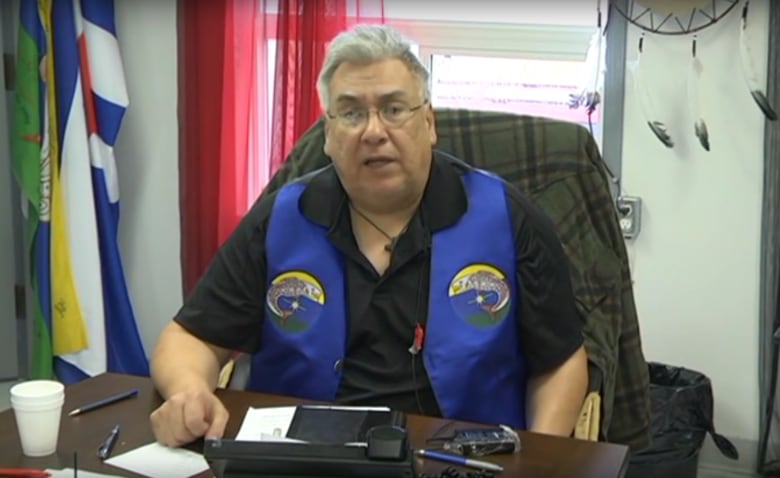At least two remote First Nations in northern Ontario have taken steps to prevent non-essential travel and protect their communities from the emerging Omicron threat.
It’s a move the region’s top public health physician hopes will be replicated across the region.
“We believe that we will be impacted by this new variant of concern, and we’re making the preparations for that,” said Dr. Lloyd Douglas.
At an emergency meeting of chiefs that was held last week, Douglas warned that infections due to the Omicron variant may overwhelm public health capacity with case and contact management, and he issued a lengthy list of recommendations to try to prevent the spread of COVID-19 in the First Nations.
Those recommendations include:
- Restrict travel to and from First Nations, including avoidance of all non-essential travel.
- Test everyone arriving in community on days one and seven.
- Require seven-day quarantine for everyone, except those who have received a third dose/booster.
- Ramp up vaccinations, with an emphasis on the importance of the booster shot.
- Limit gathering size to 10 fully vaccinated people.
Concerns about limited infrastructure
Kitchenuhmaykoosib Inninuwug was the first to restrict travel, doing so on Dec. 13. Community members are allowed to travel to smaller communities in the area, like Sioux Lookout, Dryden and Kenora. But non-essential travel further than that, for example to larger urban centres like Winnipeg or Thunder Bay, is restricted.
Essential trips, like for medical appointments, are still allowed, but anyone coming back must isolate for seven days and receive two negative tests. Essential workers like nurses, police officers and contractors are under additional COVID-19 protocols.

Chief Donny Morris said although they don’t currently have any cases of COVID-19, the First Nation is operating under the assumption that Omicron is already present in the community.
“We’re told it’s like a wall, you’re going up against a wall, and this thing is just climbing.”
Neskantaga’s restrictions kicked in Monday and are even stricter.
It isn’t allowing any non-essential travel in or out of the fly-in community, and anyone coming into the First Nation and who is not fully vaccinated must isolate for 14 days.
“We hear it’s very contagious and that’s really concerning for all of us,” Chief Wayne Moonias told CBC News. “We have to put something in place because we have a lot of vulnerable populations.”
The concern is even higher in Neskantaga, Moonias said, because of the compounding crises affecting the First Nation. The First Nation has been under a state of emergency since 2013 because of a suicide crisis and high rates of substance use, and has been under a boil-water advisory for nearly 27 years.
Moonias said they also have just one isolation unit in Neskantaga, as the First Nation faces overcrowding and a shortage of nearly 100 homes.
If people have to isolate when they come back from an essential medical appointment, Moonias said, they will likely have to isolate at home with their families. Many houses have anywhere from six to a dozen people living in them.
“It’s very scary and a very concerning time for our community,” he said.
“I honestly cannot tell you how we’re going to deal with the issue if our community is hit with this new variant, because it’s going to be massive.”
The chief has called on the provincial and federal governments to provide additional support for remote First Nations to protect against Omicron spread.
Indigenous Services Canada did not immediately respond to questions about additional support related to Omicron.
Health authority focuses on vaccinations
Dr. Lloyd Douglas, public health physician with Sioux Lookout First Nations Health Authority, said the lack of isolation units in some communities demonstrates yet again how First Nations are under-resourced.
“We are advocating to the government to whatever resources they have to alleviate a little bit of this crisis,” Douglas said.
He said the health authority continues to prioritize the rollout of COVID-19 vaccines to the communities. While a number of First Nations have high double-dose vaccination rates — in the range of 80 to 95 per cent of eligible people — there are others whose vaccination rates are hovering around 50 per cent.

“It’s an ongoing conversation with the leadership and thankfully we see that some individuals, they are, you know, tapping into that trust that we’re trying to build,” Douglas said.
“Some of those communities that are around the 40 per cent [vaccination rate], they were at less than 20 per cent weeks ago.”
In the days and weeks ahead, Douglas expects other First Nations to begin implementing additional restrictions.
“If we put those measures in place that we have outlined, I believe that it can mitigate the impact somewhat as this threat passes over us.”





More Stories
Fair share: the right office solution can take finding the right partner
Ontario faces crew shortages, aircraft issues in fight against wildfires | Globalnews.ca
Refugee attends open house at Downtown Eastside affordable housing facility – BC | Globalnews.ca